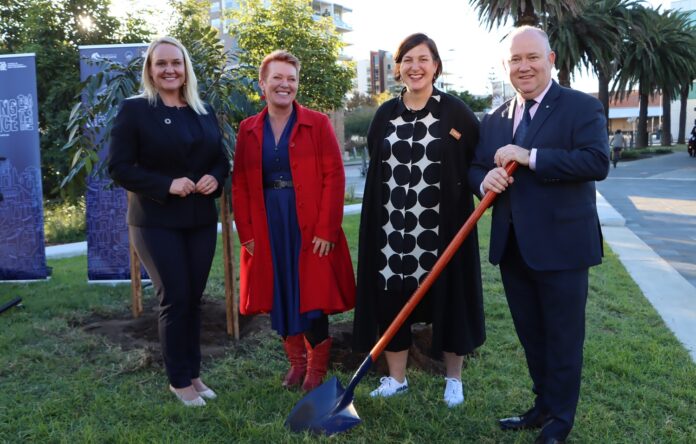Newcastle’s indigenous history will be brought to life with a series of native tree plantings designed to generate a living interpretation of Newcastle Museum’s exhibitions.
The Living Labels project, supported by funding from Create NSW, is expected to transform four sections of Museum Park into an attractive and educational natural landscape that incorporates trees and shrubs relating directly to objects within the museum’s collection.
Newcastle Lord Mayor Nuatali Nelmes said the trees would provide a living connection between the natural landscape and the stories of our past.
“Newcastle Museum is known for its innovative approach to creating deeper connections with the history and culture of our city and wider region,” she explained.
“This project creates a tangible link between the museum’s exhibits and our living world, offering a new way to interpret and understand Newcastle’s geography and history.
“Creating green open spaces, supporting the local Aboriginal and creative communities and facilitating opportunities for lifelong learning are priorities under City of Newcastle’s Community Strategic Plan, which are being imaginatively brought to life through the Living Labels project.”
Former NSW Rural Fire Service Commissioner Shane Fitzsimmons, who is now the Resilience NSW Commissioner, planted the first red cedar in Museum Park on Wednesday 21 April as a guest of University of Newcastle.
The remaining trees will be planted by City of Newcastle over coming months.
Newcastle Museum director Julie Baird said the red cedar (Toona Ciliata) was the ideal representation of resilience.
“Cedar cutting was one of the major industries of early European settlement, and it was harvested in such numbers across Newcastle and the Hunter that this tree is now a rare specimen,” she stated.
“The planting of a red cedar in Museum Park is an acknowledgement of our past and a signal to a future, green-led recovery in our region.
“It also represents the close working relationship between the museum and the University of Newcastle across the Honeysuckle precinct.”
Other plants that will form part of the Living Labels project include:
- Stringybark – this plant was used to create the traditional bark canoe (Kuueyung) used by the Worimi and Awabakal people
- Coastal Banksia – the Honeysuckle area was named after this endemic pre-European settlement species
- Tea tree – as mentioned in the description of the pre colonisation landscape in the Beaumont Street exhibition in A Newcastle Story gallery
- Ginkgo and Tree ferns – a representation of our prehistoric Permian land to educate visitors about how coal was formed in the Newcastle region
- Grass trees – to represent the plant traditionally used by the Worimi people for their fishing spears (as mentioned in the Museum’s Kuueyung display)
A native stingless beehive constructed by University of Newcastle architectural students will also be installed in a garden bed with 12-month flowering plants to create an opportunity for informal community learning and to promote pollination in the area.
Materials from the plantings will be harvested periodically for use by the local Aboriginal and creative communities.
Living Labels is an integral component of Newcastle Museum’s 2020-2023 Program, with funding thanks to Create NSW.







